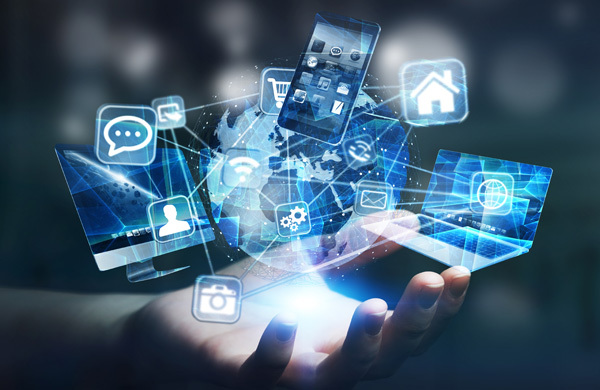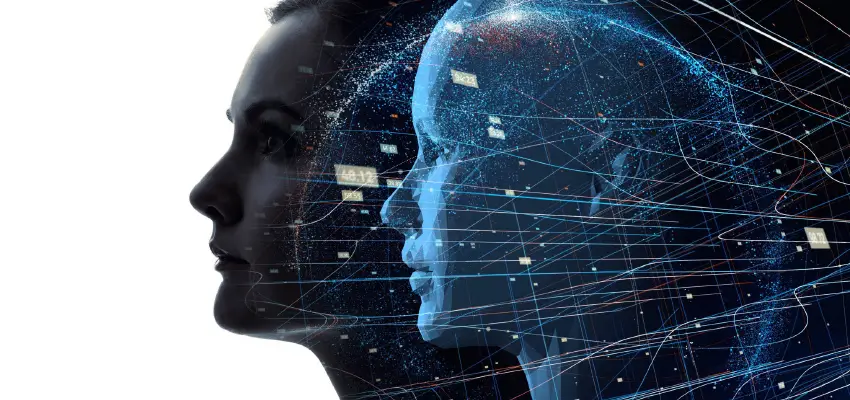Anúncios
Navigating the Digital Age: The Impact of Technology on Mental Health is a compelling subject that beckons for our attention. The rapid evolution of digital technologies has irrevocably changed our lives, offering countless benefits and conveniences. However, this digital revolution also raises significant concerns regarding its influence on our mental health. This piece delves into the intricate relationship between the growing prevalence of technology and mental health issues. It explores how the omnipresence of digital devices, constant connectivity, and the rise of social media are impacting our psychological well-being. The objective is to shed light on the potential risks and rewards of our increasingly digital lives. Further, the content will investigate the effects of technology on different age groups, particularly the younger generation who are digital natives. It will highlight scientific studies and statistics, providing a comprehensive view of how excessive screen time and online activities might be contributing to stress, anxiety, depression, and other mental health disorders. By the end of this exploration, we hope to provide a balanced perspective, acknowledging both the transformative potential of technology and the necessity for mindful engagement with our digital tools. This piece serves as a catalyst for informed conversations and actions towards healthy digital habits in the current age.
Understanding the Digital Age
In the 21st century, technological progress has accelerated to an unprecedented pace. The proliferation of smartphones, social media, and other forms of digital technology have fundamentally reshaped the way we live. But what impact does this digital revolution have on our mental health? One of the primary areas in which technology impacts mental health is through the phenomenon of social media. Social media platforms like Facebook, Twitter, and Instagram have become integral to our daily lives, providing a platform for people to connect, share information, and express themselves. However, these platforms also have significant implications for mental health.
Anúncios

While social media has opened doors for unprecedented connectivity and self-expression, it has also introduced a range of psychological stressors that researchers and mental health professionals are only beginning to fully understand. The digital age has ushered in an era of hyperconnectivity—an always-online culture where individuals are constantly exposed to information, images, and interactions that can affect their mental state in profound ways.
Anúncios
One of the most critical psychological issues linked to social media is the comparison trap. On platforms where people tend to share only the highlights of their lives—vacations, promotions, milestones—users may develop unrealistic standards for success and happiness. Constant exposure to curated content can distort one’s perception of reality and lead to feelings of inadequacy, low self-worth, and dissatisfaction with one’s own life. This can be particularly damaging for teenagers and young adults, who are still developing their sense of identity and are more vulnerable to external validation.
In addition, the need for social approval—measured through likes, comments, and shares—can create a cycle of dependence. Users may start to base their self-esteem on digital affirmation rather than intrinsic value, leading to anxiety and stress when engagement does not meet expectations. This phenomenon, known as social media anxiety, can fuel compulsive behaviors such as obsessive checking, fear of missing out (FOMO), and withdrawal symptoms when not connected to the platform.
Another area of concern is the impact of cyberbullying. Unlike traditional bullying, cyberbullying can occur at any time and often anonymously. The lack of accountability, combined with the widespread reach of digital platforms, can amplify the psychological effects on victims, sometimes leading to long-term trauma, depression, and even suicidal ideation. The anonymity and detachment provided by screens can also encourage more hostile or insensitive behavior, creating toxic online environments that are difficult to moderate or escape.
Sleep disruption is yet another negative outcome of constant technology use. Studies have shown that screen exposure—especially before bed—interferes with the body’s natural production of melatonin, a hormone essential for sleep regulation. This has led to a growing trend of insomnia, sleep deprivation, and overall reduced sleep quality, all of which are closely tied to mental health challenges such as irritability, poor concentration, and an increased risk of mood disorders.
Furthermore, the phenomenon of information overload—the excessive exposure to news, notifications, and media—can overwhelm users and contribute to cognitive fatigue. Constantly switching between apps, absorbing fragmented information, and trying to stay updated can lead to attention deficits and decreased mental clarity. This kind of digital multitasking has also been linked to lower productivity and a reduced capacity for deep, focused thinking.
It’s also important to acknowledge how digital communication affects interpersonal relationships. While apps and messaging services have made it easier to stay in touch, they have also introduced more shallow forms of interaction. Face-to-face communication is being replaced with emojis, short texts, and image sharing, which can limit the depth and emotional richness of conversations. Over time, this can contribute to feelings of loneliness and social isolation, despite being more “connected” than ever before.
In workplaces and academic environments, the expectation of being constantly reachable through emails, messaging platforms, and video calls has blurred the lines between work and personal life. This always-on culture contributes to stress and burnout, as individuals struggle to disconnect and recover during downtime. The psychological toll of this non-stop availability is becoming increasingly evident in the form of emotional exhaustion and reduced job satisfaction.

However, it’s crucial to approach these issues with a nuanced perspective. Technology in itself is not inherently harmful—it is how we use it that determines its impact. For many, social media serves as a source of support, education, and inspiration. Online communities can provide a sense of belonging for marginalized groups or individuals who may struggle to find connection in their immediate environment. Teletherapy, mindfulness apps, and digital journaling tools are examples of how technology can enhance mental well-being when used intentionally.
The challenge lies in developing a balanced, mindful relationship with digital tools. Understanding the psychological effects of our digital habits is the first step toward taking control of them. By becoming more aware of how we interact with technology—and how it makes us feel—we can begin to adopt healthier patterns of use. This might include setting time limits on certain apps, turning off non-essential notifications, or designating tech-free times during the day to recharge mentally.
Ultimately, as digital technology continues to evolve, so too must our approach to mental health. Education, awareness, and proactive behavior are key to navigating the digital age in a way that preserves—not compromises—our psychological well-being. Governments, educators, healthcare professionals, and tech companies all have a role to play in ensuring that technology serves humanity, rather than the other way around.
By promoting digital literacy and encouraging responsible use, we can harness the incredible power of technology while minimizing its risks. It’s not about rejecting the digital world—it’s about learning how to live well within it.
The Impact of Social Media on Mental Health
A growing body of research indicates that excessive social media use can contribute to feelings of anxiety, depression, and loneliness. This is because social media often presents an unrealistic portrayal of others’ lives, leading to feelings of inadequacy and low self-esteem among users. Furthermore, the constant availability of social media can create a sense of pressure to be constantly connected and responsive, which can be mentally exhausting.

Technology and Work-Life Balance
In addition to social media, technology also impacts mental health through its effects on work-life balance. With the advent of email and other forms of digital communication, employees are often expected to be available around the clock, blurring the boundaries between work and personal life. This can lead to increased stress and burnout, which in turn can negatively impact mental health.
Managing Technology for Better Mental Health
Despite these challenges, it’s important to remember that technology itself is not inherently harmful. Rather, it’s the way we use technology that can either support or undermine our mental health. By setting healthy boundaries around technology use, individuals can reap the benefits of technology without falling prey to its potential downsides.
- Set time limits: Limiting the amount of time spent on social media or other digital platforms can help to prevent feelings of overwhelm and anxiety.
- Use technology mindfully: Be conscious of how you’re using technology. Are you using it as a tool to enhance your life, or is it causing you stress?
- Take regular breaks: It’s important to take regular breaks from screens to rest your eyes and refresh your mind.
The Future of Technology and Mental Health
As we look to the future, it’s clear that technology will continue to play a pivotal role in our lives. Therefore, it’s essential that we continue to research and understand the effects of technology on mental health, in order to better equip individuals and communities to navigate the digital age.
Technological Solutions for Mental Health
Despite the potential downsides, technology also has the potential to be a powerful tool in supporting mental health. Digital mental health interventions, such as online therapy and mental health apps, are becoming increasingly prevalent and can provide accessible, affordable mental health support for those who may not otherwise have access to it.
In conclusion, the “Navigating the Digital Age: The Impact of Technology on Mental Health” article underscores the duality of digital technology in relation to mental health. While it’s true that technology has increased access to mental health resources, information and support, we must not overlook its potential negative impact. Screen addiction, cyberbullying, and feelings of isolation and depression triggered by social media comparisons are genuine concerns in today’s digital world. Therefore, it is crucial for users to strike a balance in their technology use, and for tech companies to promote responsible usage. Moreover, mental health professionals need to stay informed about these digital influences and incorporate this knowledge into their practice. Furthermore, educating the public about the potential mental health implications of technology use is imperative. In the digital age, we must navigate wisely. Technology, if used responsibly, can be a powerful tool in promoting mental health and well-being, but unchecked, it can also lead to adverse mental health outcomes. Hence, digital literacy and responsible technology use should be top priorities in our increasingly connected world.

